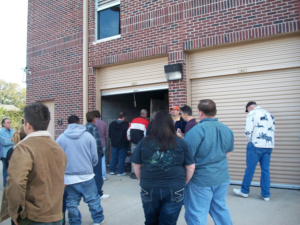 If you’ve never attended storage unit auctions in the past, you may be uneasy about your first auction. Understanding how they work can prevent you from being nervous and set you on the right path for success. Storage auctions aren’t difficult to understand, but they can be a little intimidating at first. Here’s what you need to know:
If you’ve never attended storage unit auctions in the past, you may be uneasy about your first auction. Understanding how they work can prevent you from being nervous and set you on the right path for success. Storage auctions aren’t difficult to understand, but they can be a little intimidating at first. Here’s what you need to know:
-- Storage unit auctions happen when a tenant fails to pay the rent for his unit. After the facility attempts to contact the delinquent tenant, the unit is put up for sale. The sale must be advertised publicly and auctioned to the highest bidder.
-- Most storage facilities save their delinquent units to sell them all at once to reduce hassles and maximize bids.
-- Storage facilities aren’t out to profit from auctions. Most are lucky to break even. They mostly just want to empty out the unit so that they can start renting it out to someone else.
-- When you arrive at the auction, you’ll have the chance to look inside the unit, but you can’t enter it. Bring a flashlight so you can see what you’re looking at.
-- Bidding will start after everyone’s had a chance to see the unit, and it’ll continue until no higher bids are placed. This can take a while if there’s a lot of people there or if the unit is particularly attractive.
-- If you have the high bid, you’ll need to pay the auctioneer after the bidding. Be sure to bring cash as checks and credit cards are not accepted.
-- After you win the unit, you’ll have about 48 hours to empty it out, so be sure you have somewhere to store your items.
Once you get down the basics of storage unit auctions, perfecting the art of bidding takes a bit of time and practice but it’s not difficult. Your biggest goal is to research the type of items you’re likely to find and figure out what will sell for the most on the resale market. Once you know what an item is worth, you’ll be able to keep your bidding in line to maximize your profits.
